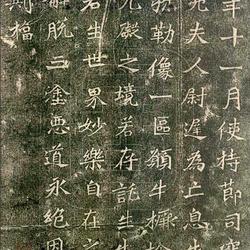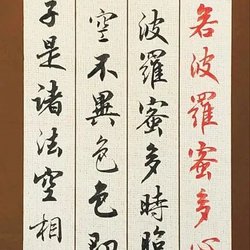

"The Stele of Zheng Wengong", that is, the "Stele of Zheng Xi, the Governor of Yanzhou in Wei", was carved on a cliff in the Northern Wei Dynasty. It was carved by Zheng Daozhao in memory of his father in the fourth year of Yongping (511 AD), the fourth year of Emperor Xuanwu of the Northern Wei Dynasty. The writer is Zheng Daozhao, Zheng Xi's son. Zheng Daozhao was the governor of Yanzhou at that time. He first carved it on the top of Tianzhu Mountain. Later, he found that the stone quality in Yunfeng Mountain in the south of Ye County was better, so he carved it again. The first engraving is called the upper stele, and the characters are smaller because of the poor quality of the stone. The characters are blurry; the second engraving is called the lower stele. The characters are slightly larger and clear, with a total of fifty-one lines. , with twenty-nine characters per line, but no signature. It was not until Ruan Yuan came to copy it in person and certified it as the work of Zheng Daozhao that it was taken seriously.
The strokes on Zheng Wengong's stele are either square or round, some are sideways to be graceful, or some are straight to gain momentum, mixing seal script, rhyme, and grass sentiment into one, combining strength and charm, which can be called immortal. The structure is broad and broad, and the spirit is majestic. Bao Shichen of the Qing Dynasty said: "There are many side characters on the northern stele, Zheng Wengong is the only real character, and the rhyme and rhyme of the seal script are all full of grass. The white version of Yi Ying and the painted version of Shigu have the same origin as Cao, so they are signed here. "Cao Zhuan. It is not divided into words, but the essence is easy to see." It is "a rare treasure in Zhenwenyuan".
Zheng Zhaodao (455-515 AD) was a calligrapher in the Northern Wei Dynasty. His courtesy name is Xi Bo, and he calls himself Mr. Zhongyue. A native of Xingyang (now part of Henan Province). The official Guozi offered sacrifices to the emperor, the governor of Guangzhou, and later became the secretary and supervisor. His posthumous title was Wengong. His calligraphy skills are good at straight writing, his style is elegant and graceful, and he is especially good at writing large characters.




















